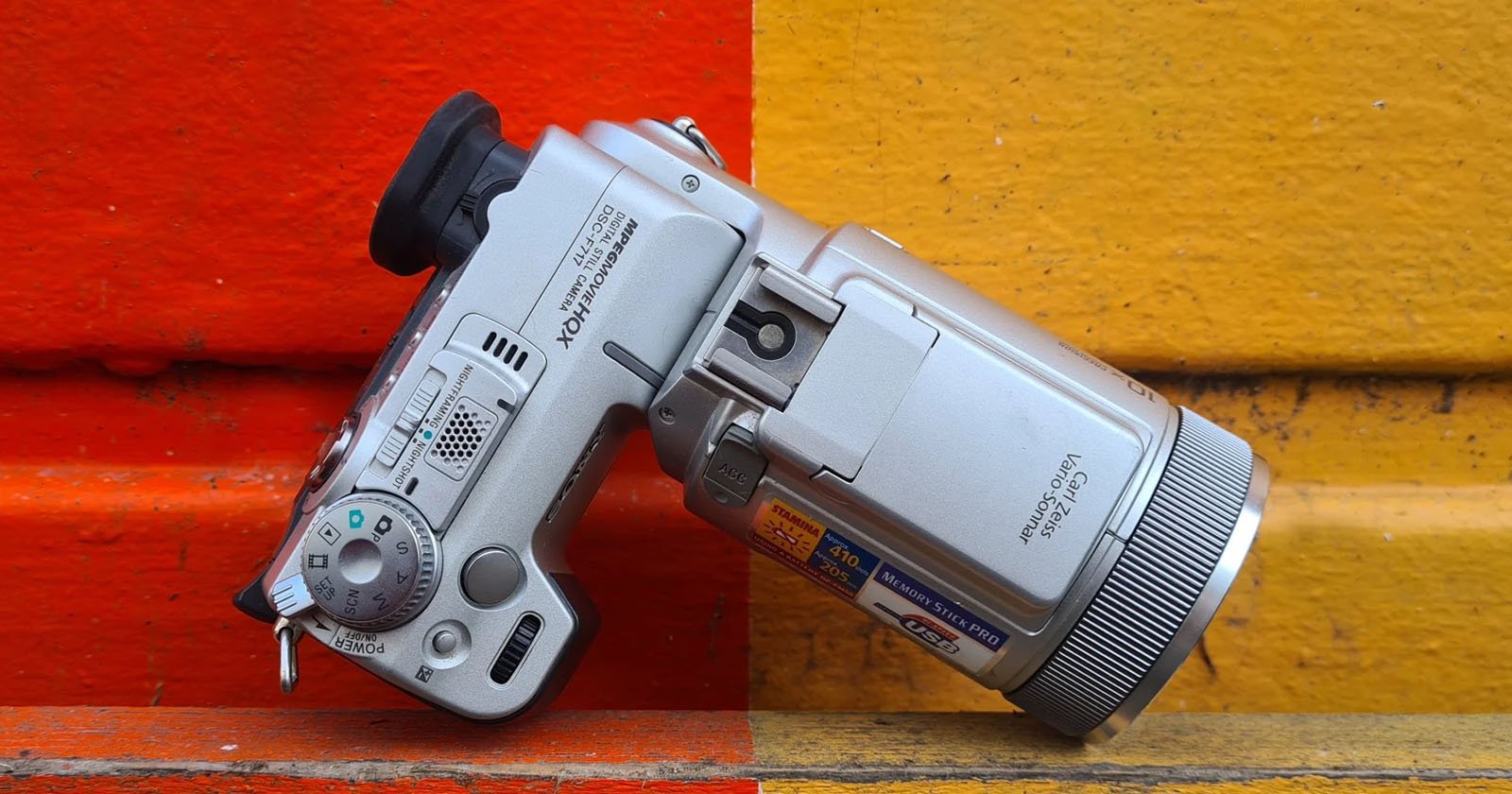
Last August, Gordon Laing of Camera Labs looked at one of his favorite vintage digital cameras, the Sony Cyber-shot F707. Now Laing looks at its successor, 2002’s Sony Cyber-shot F717. Sporting the same L-shaped design and imaging pipeline as the F707, the F717 introduced numerous refinements that made Laing desperately want to add it to his collection. “That said, out of over 50 old cameras I’ve taken a punt on over the years, the vast majority have sprung back into life given a new battery with one big exception: yep, you guessed it, the F717,” Laing writes. The first F717 he bought online had a broken sensor, while the second had unsolvable memory card issues. A third camera showed the same memory problems at first, but after a few days of power cycling, it sprung to life.
Despite having the same basic shape as the F707, albeit with a silver finish, there are some design changes that offer improvements, including a new hotshoe and a refined lens barrel. The 5-megapixel CCD image sensor is the same, although Laing notes that the F717 includes improved white balance and color accuracy. Specifically, the F717 aims to overcome issues with overly saturated reds. The camera also employs an improved noise reduction system. The built-in lens is the same as before, despite some tweaks to its casing. The F717 has a 38-190mm equivalent zoom, a 5x optical zoom, and a max aperture that ranges from f/2 to f/2.4, which is impressively bright and, despite the small image sensor (8.8 x 6.6 millimeters), offers some rather soft bokeh. While this may all sound like standard fare so far, the F717, like the F707, has a very neat party trick up its sleeve. “As before, one of the most unique aspects of the 717 is its ability to frame, focus and shoot in darkness. To demonstrate, I tested the camera outside in complete darkness where I was invisible to the camera’s normal visible light modes. Switch the camera to Night Framing though, and the 717 activates a pair of infra-red LEDs at the end of a barrel to illuminate nearby subjects, while also flicking the standard IR-blocking filter out the way of the sensor. Bingo, the camera can now see the subject, allowing you to frame,” Laing explains. This also allows the F717, with a bit of finagling, to act as an infrared camera. As Laing notes, the Nightshot mode that enables IR shooting only works with automatic exposure modes, so it is useless during the daytime by default. However, Laing added a neutral density (ND) filter to his F717, turning it into a proper IR camera for all occasions. There’s also a magnet hack that allows users to bypass the need for Nightshot mode. Laing details this hack in the latter portion of his video review.
“I’ve said it before and I’ll say it again: the F-series represented Sony’s design team at the top of their game, combining unique looks, unashamed gadgetry and decent quality images with a surprisingly usable photographic experience. I loved it in 2002 and, caveats aside, still love it 22 years on,” Laing writes. Many more photos are available in Laing’s written review on Camera Labs. More “Retro Reviews” are on Laing’s vintage technology YouTube channel, Dino Bytes. Image credits: Images © Gordon Laing / Camera Labs






